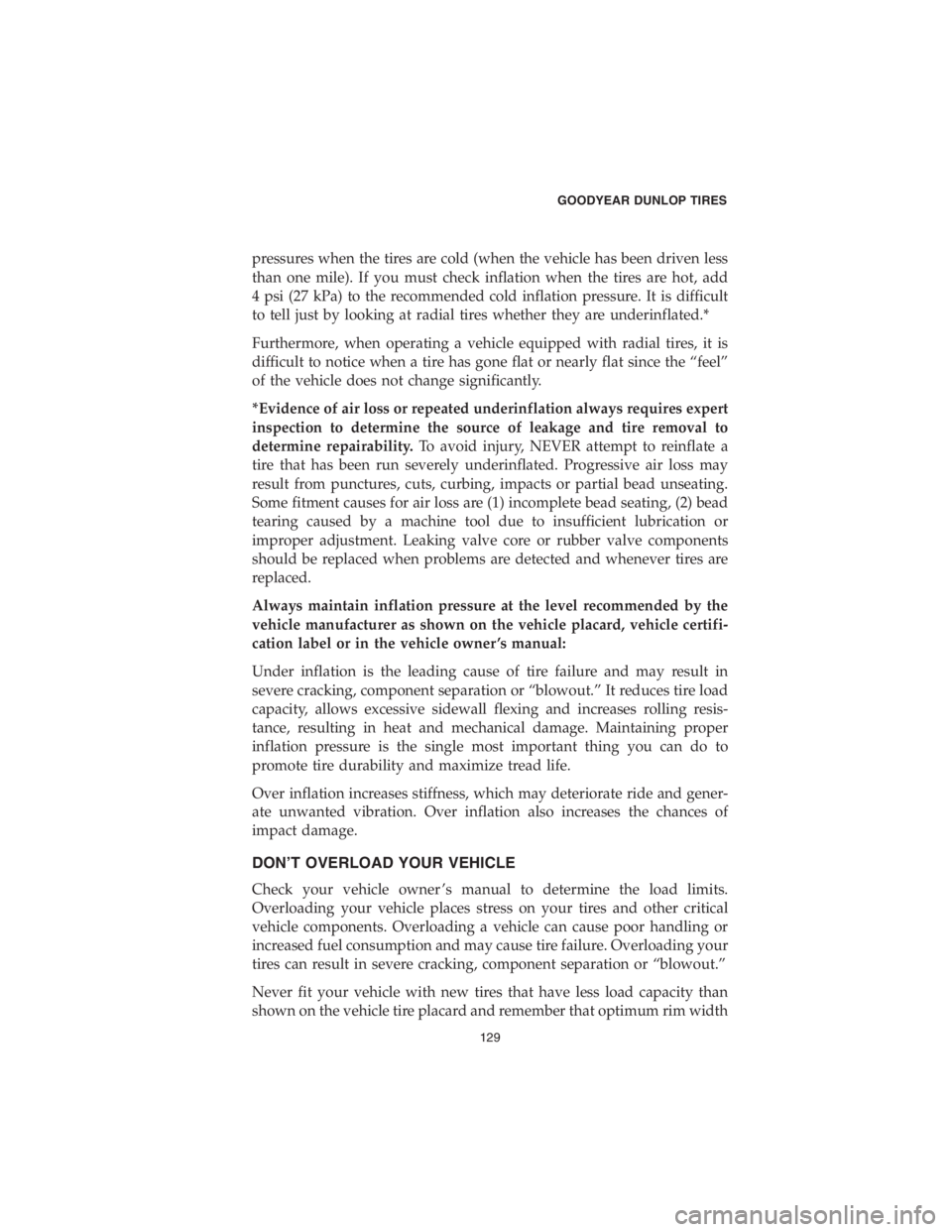seat adjustment CHRYSLER 300 2018 Vehicle Warranty
[x] Cancel search | Manufacturer: CHRYSLER, Model Year: 2018, Model line: 300, Model: CHRYSLER 300 2018Pages: 316, PDF Size: 3.15 MB
Page 130 of 316

pressures when the tires are cold (when the vehicle has been driven less
than one mile). If you must check inflation when the tires are hot, add
4 psi (27 kPa) to the recommended cold inflation pressure. It is difficult
to tell just by looking at radial tires whether they are underinflated.*
Furthermore, when operating a vehicle equipped with radial tires, it is
difficult to notice when a tire has gone flat or nearly flat since the “feel”
of the vehicle does not change significantly.
*Evidence of air loss or repeated underinflation always requires expert
inspection to determine the source of leakage and tire removal to
determine repairability.To avoid injury, NEVER attempt to reinflate a
tire that has been run severely underinflated. Progressive air loss may
result from punctures, cuts, curbing, impacts or partial bead unseating.
Some fitment causes for air loss are (1) incomplete bead seating, (2) bead
tearing caused by a machine tool due to insufficient lubrication or
improper adjustment. Leaking valve core or rubber valve components
should be replaced when problems are detected and whenever tires are
replaced.
Always maintain inflation pressure at the level recommended by the
vehicle manufacturer as shown on the vehicle placard, vehicle certifi-
cation label or in the vehicle owner ’s manual:
Under inflation is the leading cause of tire failure and may result in
severe cracking, component separation or “blowout.” It reduces tire load
capacity, allows excessive sidewall flexing and increases rolling resis-
tance, resulting in heat and mechanical damage. Maintaining proper
inflation pressure is the single most important thing you can do to
promote tire durability and maximize tread life.
Over inflation increases stiffness, which may deteriorate ride and gener-
ate unwanted vibration. Over inflation also increases the chances of
impact damage.
DON’T OVERLOAD YOUR VEHICLE
Check your vehicle owner ’s manual to determine the load limits.
Overloading your vehicle places stress on your tires and other critical
vehicle components. Overloading a vehicle can cause poor handling or
increased fuel consumption and may cause tire failure. Overloading your
tires can result in severe cracking, component separation or “blowout.”
Never fit your vehicle with new tires that have less load capacity than
shown on the vehicle tire placard and remember that optimum rim width
GOODYEAR DUNLOP TIRES
129